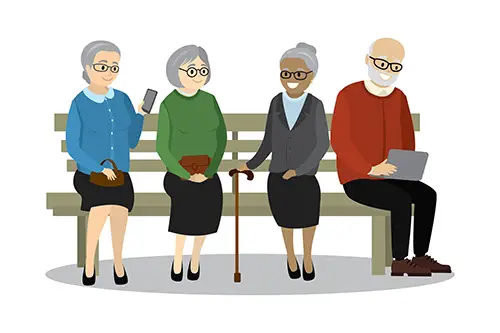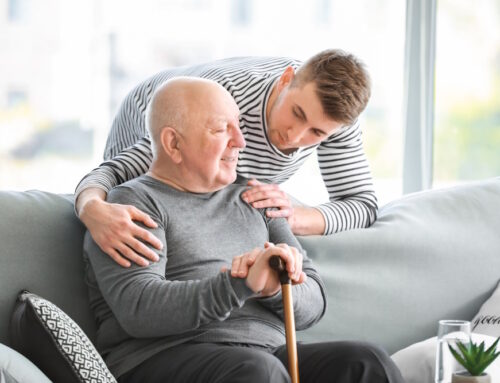As a Caregiver, it is vitally important to educate yourself regarding how to provide culturally sensitive senior care.

In society, the importance of acknowledging and displaying greater sensitivity towards those with different cultural lifestyles is paramount in how that society is viewed and treated.
In this article, we will discuss what cultural sensitivity is, the importance of it, and how you can deliver culturally sensitive senior care.

What is Cultural Sensitivity?
The term cultural sensitivity simply means to respond respectfully and appropriately to others that may have different cultural backgrounds than we do. In any healthcare setting, it is even more important to understand and behave in a manner that conveys deep respect and personal worth of every patient regardless of their race, sex, religion and cultural backgrounds.

The Importance of Sensitivity Towards Cultural Differences
We subconsciously convey our attitudes and acceptance or not of individuals we perceive as different with our behaviors, communication and body language reactions. This includes gestures that can mean different things to different people groups.
This societal sensitivity plays a huge role in how citizens in a common society treat other individuals who have different attitudes, belief systems and language differences. Various cultures have preferred dress styles, food choices and other defining characteristics.

Cultural Awareness in Caregiving
The first step in achieving an equal society for all begins with recognizing cultural awareness. This awareness of other people’s differing cultures becomes even more crucial when in a healthcare and/or living environment. Today, the percentage of seniors from different backgrounds and cultures is exploding among certain aging ethnic groups entering long term care homes. This trend is expected to dramatically continue to rise in the years to come.
This can greatly impact how caregiving is perceived and performed when there are many culture differences in a nursing and/or living home setting. Healthcare providers that deliver caring seniors programs and cultural diversity training for their staff show a dramatically better score of positive patient responses to care.
These healthcare providers specializing in senior care also benefit from greater care satisfaction score levels from patients and their families when asked to evaluate their care at discharge or with regular surveys.

Tips and Advice when Caring for Patients from Different Cultures
There are some tips caregivers can use to ensure that their patients feel safe, respected and appreciated even if they are from another culture. These include:
- Always inquire about cultural preferences right at admission
- Take steps to allow cultural observances whenever possible
- Use a translator to ensure understanding of medical treatment and care
- Respect cultural taboos or usual lifestyle choices
- Ask about name preferences, religious observations and usual daily routine differences
- Accommodate patients as much as possible

How Forced Cultural Assimilation Affects Patient Care
When patients have difficulty interacting with their caregivers, they can feel angry, frightened, confused and/or humiliated. These real or perceived differences can put tremendous stress on the patient, and patients might be too scared or confused to participate in care as expected.
Some patients become depressed or extremely agitated, and untrained staff can become frustrated with the patient due to interpreting the patient’s natural reactions as the patient being difficult. This can lead to undue stress for both patient and staff.

Communication Barriers
Patients who do not speak the local language can understandably feel a sense of frustration when their caregivers cannot understand them. Communication barriers can hinder caring seniors from getting the proper care in long term care homes.
Some geographical regions will have larger concentrations of diverse ethnic groups. Florida and Texas have large populations of Hispanic groups that mostly speak Spanish. Diverse cities like New York City, Chicago and San Francisco tend to have larger Asian populations that speak a number of different languages like Mandarin, Japanese or Korean.
With the continuing trend towards more diversity from incoming immigrants relocating to the United States, healthcare providers need more access to language translators either in person, by video or phone. Alternative communication boards using pictures can be helpful.

Respecting Sense of Space
Our cultural traditions can include our comfortable sense of space. While most Asian countries have larger populations, these ethnic groups are often a bit standoffish when greeting people and may not make eye contact while speaking as a sign of respect. Italians typically hug and kiss people when greeting someone or leaving.
It is important to try to understand each patient’s comfortable sense of space, privacy expectations and physical contact preferences. Ask patients to identify their desired form of address.

Health Related Traditions
There are many health related traditions that could affect healthcare treatment. This could be religious taboos like no blood infusions for devoted Jehovah’s Witnesses, use of non-traditional medicine options like acupuncture popular with Asians, prayers or laying-on-of-hands in certain Christian circles or use of meditation and cleansing rituals for Hindus from India or Pakistan.

Time Observation Taboos
There can be difficulties with time when caring for individuals that come from a different cultural tradition. Native Americans and other tribal cultures have different expectations of time. Some are not used to abiding by a strict schedule and tend live more in-the-moment.
Many religions and culture differences have expected time taboos and observations that someone not familiar with their traditions would be aware of. Specific holidays, religious observations and other time-related traditions should be adhered to by caregivers as much as possible.

Respecting Diet and Food Differences
Many cultures have different dietary and food observations and customs. Traditional Jewish culture requires strict adherence to very specific dietary laws for food preparation.
How the food is served, eating customs and meal times can cause misunderstandings. Burping and loud belches are considered the normal polite response to a satisfactory meal in a number of countries, and Americans typically find this behavior rude.
Tribal people and family-oriented cultures have different methods for polite mealtime customs. Patriarchs of the family group are often served first, and more traditional societies demand that guests be given the best food portions, then the men and women are served last.

Respecting Family Traditions
Cultures have different family traditions and common societal customs that govern clothing, familiarity and social status. Men from some Middle Eastern countries might be upset if their wives, sisters or daughters wore revealing clothing common here in America.
Indian families are often larger, and family marriage celebrations are very lavish. The entire extended family is involved. Arranged marriages are still popular in many regions.

Understanding Various Social Structure Norms
In some cultures, family honor is very protected and important. Families often are reluctant to share personal health issues, problems or embarrassing situations with anyone outside of their family. Some cultures operate more like a village. These societies use group efforts to perform chores, care for children and seniors.
At barn-raising projects in Amish communities, church members work together following a fire or other incident. Most Catholics won’t eat meat on Fridays during Lent before Easter their most important religious holy day. Many people in India won’t eat or harm cows as they are considered sacred.

Acknowledging and Addressing Caregiver Biases
All long term care homes should provide culture awareness education for their staff that includes acknowledging and addressing caregiver biases. Learning to appreciate and respect culture differences is key for increasing cultural sensitivity among caregivers.
How individuals treat each other regardless of various differences greatly determines whether everyone in a diverse setting feels respected and included as equals with their fellow citizens.
Cultural awareness is changing how caregivers of seniors are delivering healthcare.



